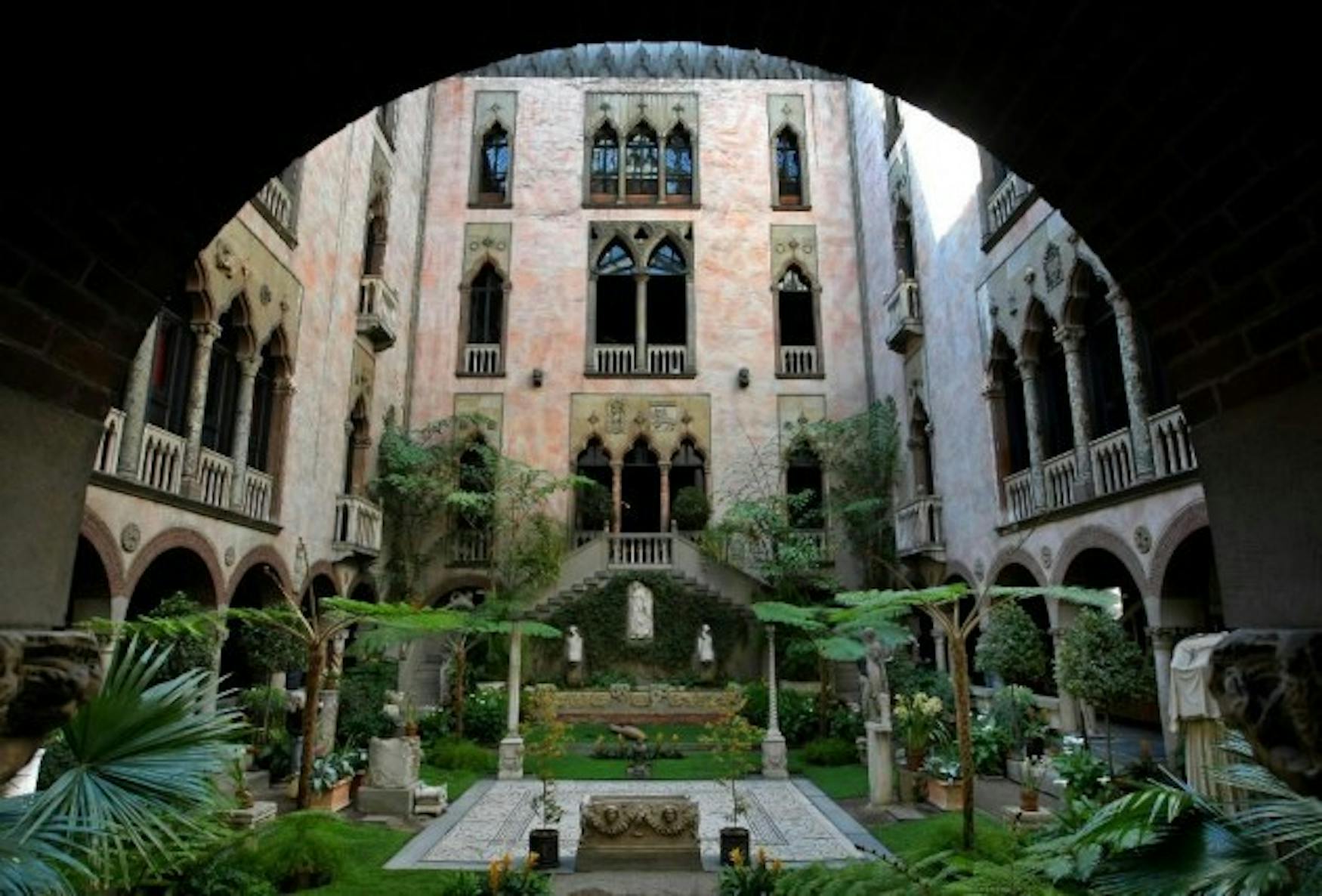Historian ponders relation between text and art
Art historian Linda Nochlin delivered the second speech in the lecture series "The Art of Memory," at the Isabella Stewart Gardner Museum in Boston on Thursday. Nochlin's lecture explored the work of the contemporary conceptual artist Sophie Calle, whose work is currently on view at the museum in the exhibition Sophie Calle: Last Seen.
Calle's relationship with the Gardner Museum began in 1991 when she created a series of works that combined photographs and texts in response to the infamous, still unsolved 1990 theft at the museum. During the theft, 13 works were stolen, including Vermeer's The Concert.
The series evolved from Calle's interviews with curators, guards and other museum staff. Asking the staff to recall the stolen images, Calle would combine their texts with images to create a commentary on the void that the missing works created.
Isabella Gardner stipulated that the museum would remain untouched following her death, and though the frames of the works were left behind by the thieves, the museum decided to remove them from view. In 1995, the museum decided to rehang the empty frames. Calle revisited her 1991 series by creating the series What Do You See? in 2012. Rather than asking members to recall the lost paintings, she asked each visitor to respond to the framed blank spaces before them.
The experienced art historian Nochlin chose to explore the theme of absence and memory in Calle's work by first tracing the long, historical relationship of text and image throughout history.
Nochlin called her project "The relationship between word and image embedded in a wider project of representation," adding that "The basic relationship of text with image goes back to antiquity."
In fact, Nochlin began her account of history with Homer's Iliad, which was an extended exercise in ekphrasis, or a description of a visual work of art. The relationship between words and images sprang from an oral tradition, she added, and from ancient texts such as the Iliad, beautiful physical and metaphorical representations and descriptions of objects were produced. For example, the Shield of Achilles, an object that was only verbally described, was interpreted and made tangible in the 1800s by artists such as John Flaxman and Angelo Monticelli.
Including the original ekphrasis relationship between image and text, two more have since been created: analytical art history and criticism. Art criticism sprang from a desire to produce a more objective, scientific way to speak about art-in essence, "art history without artists" as Nochlin said. Of the three, art criticism is, in Nochlin's words, "the most propagandistic," as it stipulates that a work is either "good" or is "abysmally bad."
Nochlin concluded her historical account by relating it to modern day art criticism. And, though Calle is working within the same themes, her work is a rejection of the image-text relationship on which Nochlin elaborated.
Calle's work, unlike previous works in history, is different because she does not attempt to produce a relationship between image and text.
Instead, Calle asks others outside the art world to participate. She wants others, not poets or art historians, to describe and paint and thus produce the relationship between image and word.
The visitors and museum staff who comment on the missing works are forced to draw or write about the work from memory. The final works are not the product of an individual, but rather a group of anonymous individuals with varied degrees of art education and literary skill.
Essentially, Calle's images act as a visual text. The fragmented texts produced from multiple authors vary in content: from the asinine and boring comments to existential and profound comments. Though the most amusing comments are the ones where the individuals express how they honestly cannot recall the image, or actually, never even liked the famed work.
Calle's work that is on view at the museum produces a relationship between image and word, and absence and memory. Taken as a whole, her exhibition at the Gardner works to reinstate how significant and important the original artwork is.
Try as we might, the aura and influence of an original piece cannot be replicated. There is no physical substitute for the true presence of original artwork.



Please note All comments are eligible for publication in The Justice.